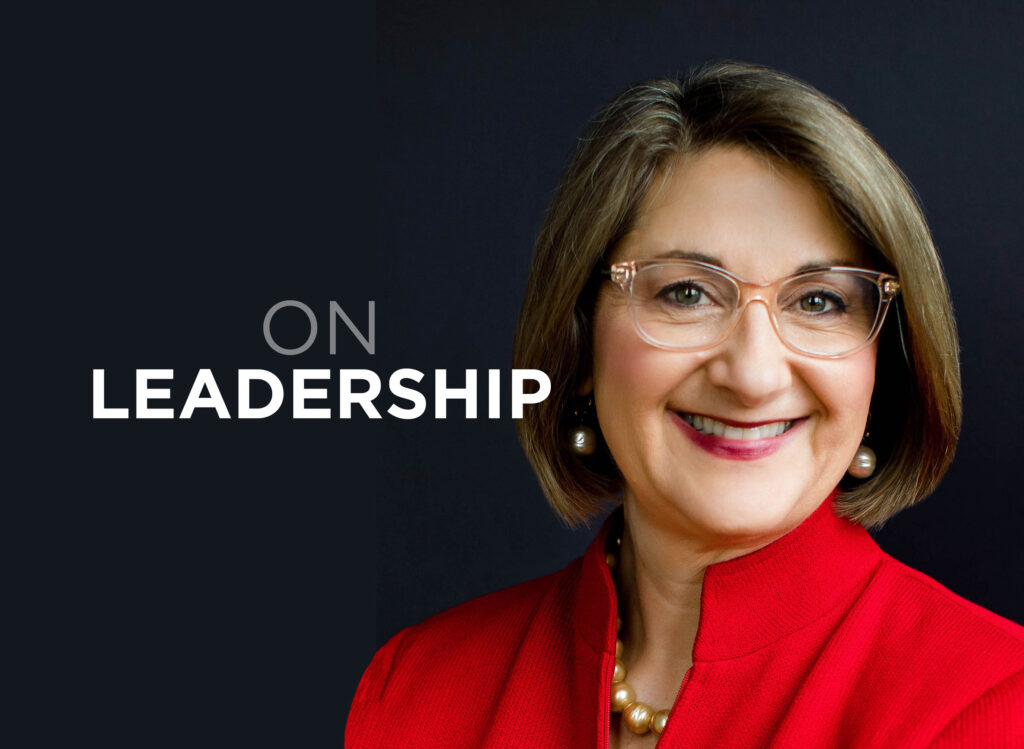On Leadership: Stop doing everything – The power of strategic prioritization

“My inbox is a war zone and my calendar a battlefield,” a CEO recently confessed to me. While we both got a chuckle out of his description, his detailed account of the relentless barrage of emails and meetings and the constant stream of “urgent” requests that had hijacked his days and nights was no laughing matter.
This wasn’t an isolated case. I experienced this reality in my own years leading organizations and now, as an executive coach and mentor, I see this story repeated time and again. Leaders, driven to succeed and guided by a sense of duty, attempt to juggle an ever-expanding list of responsibilities, only to find themselves overwhelmed and, ultimately, less effective.
The leader of tomorrow cannot afford this chaotic approach. In an age of unprecedented disruption, where the lines between work and life blur, and the pressure to be “always on” intensifies, strategic prioritization is not just a skill. It is increasingly a survival mechanism – the difference between leading with intention and reacting to every passing fire.
Why is this so critical? Because time, one of our most precious resources, is finite. In his best-selling business book “Four Thousand Weeks: Time Management for Mortals,” Oliver Burkeman explores why the central challenge of time management isn’t becoming more efficient, but deciding what to neglect. He states: “You’re already inescapably part of, and constrained by, reality. Your time is already running out, and … choosing to do anything with any given portion of it always means choosing not to do a million other things, many of which might have been equally worthwhile.”
This realization is not a cause for despair, but a call to action. It compels us to move beyond the illusion of time mastery and embrace the reality of our limitations.
The first step is to acknowledge that we cannot do everything. The second step is to embrace the idea that we should not do everything. In a recent HBR article,“Leaders Shouldn’t Try to Do It All,” the authors assert: “Many important tasks can be done by other people. Focus on what you can do a lot better than anyone else.” Their definition of “leading to win” is that leaders shouldn’t spend their scarce time on activities simply because they are very important, but “should do only the things that nobody else in the organization can do nearly as well – if at all.”
To escape this cycle of doing everything, leaders must learn to make hard choices. This means ruthlessly prioritizing tasks and activities, focusing on those that align with their core values and long-term goals. As Warren Buffett once told Inc. Magazine, “The difference between successful people and really successful people is that really successful people say no to almost everything.”
What’s more, we must shift our focus from mere productivity to value-driven time allocation. Productivity tools can be helpful, but they are meaningless without a clear understanding of what truly matters.
Finally, effective strategic prioritization requires a willingness to delegate and empower others. Leaders must identify high-impact activities and free up their time from less critical tasks. This not only increases efficiency but also fosters a culture of trust and collaboration.
In a world that demands constant attention, the leader who masters the art of strategic prioritization will be the one who pulls ahead – leading with clarity, purpose and a sense of calm, navigating the chaos with intention and focus. They will be the ones who understand that, in the face of limitless demands, the power lies in knowing what to leave undone.
For advice on strategic prioritization, I turned to top local leaders.

Dave Keith, president and CEO, Wellabe
Maintaining a wide lens on our business allows me to assess where I can best apply my time and energy. Three specific practices help me maintain a broad view:
Understanding where we are in our progress toward the company’s vision and business strategy shows me where I can be a differentiator who generates value.
Relying on my management team’s strengths allows me to be a great follower and insert myself when requested or needed.
Receiving unfiltered feedback grounds my perspective, helping employees at all levels feel connected and validated, while providing a pulse on the company.

Dan Keough, chairman and CEO, Holmes Murphy
As I plan my days, I try to reflect on where I can add value and make unique contributions to the meeting, project, event, etc. From a Holmes Murphy perspective, I want to be sure that our people are placed in their highest and best use to make a unique impact – and that includes me and my time. In fact, earlier this year I adopted a color-coded calendar system on a wall in my office, to ensure that I could visually see when and where my time is being spent.
I have a fairly simple view around time spent and making an impact, and it involves three key components: 1. You’ve got to show up. 2. You’ve got to be great at what you do. 3. You most certainly must be a great teammate.

Jo Christine Miles, director, Principal Community Relations and Principal Foundation
In today’s fast-paced environment, identifying and focusing on my unique contributions is essential for maximizing organizational impact. I begin by focusing on the mandate the organization has given me, allowing my defined role to provide scaffolding for the vision I set and the strategic decisions I make to shape my team’s work. Next, I lean into the distinct strengths and expertise my team and I possess to pinpoint areas where we offer unparalleled value and drive innovation. With a clear understanding of our unique capabilities, I guide my team to prioritize projects that align to the organization’s strategic goals, ensuring that our actions contribute to our collective success. Continuous learning further refines my work, enabling me to adapt swiftly to emerging challenges. I have found that this disciplined approach ensures that my time is invested in creating meaningful change for the organization and yielding consistently exceptional results.

Valentina Salotti, associate dean for academic affairs, Kingland MBA professor, Iowa State University Ivy College of Business
Do not equate increased workload or responsibilities with greater impact. Engaging in too many high-stakes tasks can result in burnout and reduce your ability to ideate, be creative, and strategize for long-term initiatives. Regularly evaluate how your skills contribute to the organization and balance the projects you undertake to maximize both impact and your own career development. Remember that focusing on your professional goals is just as important as furthering your organization’s objectives. It is essential to allocate time for creativity and innovation, to highlight your achievements, and to maintain visibility with all stakeholders. Ensure that added responsibilities do not compromise your visibility in the profession, your ability to network, and continue to improve your skill set.
Suzanna de Baca is a columnist for Business Record, CEO of Story Board Advisors and former CEO of BPC. Story Board Advisors provides strategic guidance and coaching for CEOs, boards of directors and family businesses. You can reach Suzanna at sdebaca@storyboardadvisors.com.

Suzanna de Baca
Suzanna de Baca is a columnist for Business Record, CEO of Story Board Advisors and former CEO of BPC. Story Board Advisors provides strategic guidance and coaching for CEOs, boards of directors and family businesses. You can reach Suzanna at sdebaca@storyboardadvisors.com.






